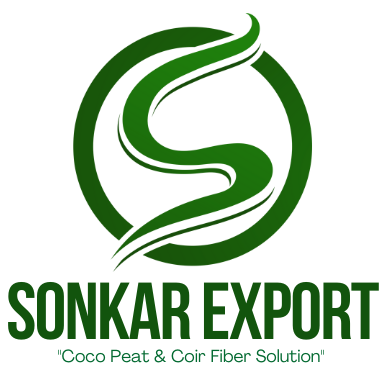
Coco peat, also known as coir pith, coir dust, or coconut peat, is a versatile growing medium derived from the fibrous husk of coconuts. For decades, this byproduct was discarded as agricultural waste during the extraction of coir fibers. However, with increasing awareness about sustainable agriculture and soil health, coco peat has transformed into a highly valued resource in modern farming, horticulture, and hydroponics.
🌿 How Coco Peat Is Made
Coco peat is produced from the mesocarp tissue, or the coir fiber pith, found between the hard inner shell and the outer coat of a coconut. The husks are soaked in water (a process called retting) to soften the fibers. After the long coir fibers are extracted, the leftover pith is collected, dried, sieved, and sometimes compressed into bricks or blocks for ease of handling and transport.
The resulting material is lightweight, fluffy, and brown in color. When rehydrated, coco peat expands up to 5 to 7 times its original volume, making it an efficient and compact growing medium.
🌱 Key Characteristics of Coco Peat
Excellent Water Retention: Coco peat can hold up to 8–10 times its weight in water. This property ensures that plants stay hydrated longer, especially during dry conditions or irregular watering.
Improved Soil Aeration: Its fibrous texture prevents soil compaction and promotes air circulation around roots, essential for healthy root growth.
Neutral to Slightly Acidic pH: Coco peat typically has a pH between 5.5 and 6.8, which is ideal for most crops, especially vegetables and flowers.
High Cation Exchange Capacity (CEC): Coco peat holds and releases nutrients effectively, helping plants absorb essential minerals like potassium, magnesium, and calcium.
Sterile and Weed-Free: Being processed and dried, coco peat is naturally resistant to pests, weed seeds, and pathogens, reducing the need for chemical treatments.
🌾 Applications in Agriculture and Gardening
Coco peat is used in various agricultural and gardening applications, including:
Seed Germination: Its fine texture and moisture retention make it ideal for germinating seeds in trays or containers.
Potting Mixes: Mixed with compost, perlite, or vermiculite, coco peat becomes an excellent soil conditioner.
Hydroponic Farming: In soilless growing systems, it acts as a sustainable base for root support and nutrient delivery.
Greenhouse Cultivation: Coco peat is a preferred medium in greenhouses for cultivating tomatoes, peppers, cucumbers, and strawberries.
Landscaping: It helps retain moisture in decorative plant arrangements and flower beds.
🌍 Environmental Benefits
One of the most compelling reasons to use coco peat is its positive environmental impact. Unlike peat moss, which is harvested from delicate and slow-regenerating peat bogs, coco peat is a renewable byproduct of coconut farming. Utilizing coco peat helps reduce agro-waste, lowers carbon footprint, and conserves natural ecosystems.
Additionally, coco peat is biodegradable and can be composted after use, returning organic matter to the soil and improving its long-term fertility.
💼 Why Exporters and Importers Prefer Coco Peat
For exporters like Sonkar Export, coco peat represents a growing market opportunity due to rising demand from countries focusing on organic and sustainable farming. Compressed into 5 kg bricks or 650g blocks, it is easy to ship and store. Importers prefer it for its quality, affordability, and adaptability to multiple agricultural conditions.
Coco peat blocks are typically tested for:
Moisture content
Electrical conductivity (EC)
Expansion ratio
Sand content
Fiber percentage
Certifications like ISO, OMRI listing (for organic use), and phytosanitary checks help exporters meet international quality standards.
🧪 Tips for First-Time Users
Rehydrate Properly: Soak the block in clean water (about 5–6 liters per kg) and let it expand fully before use.
Mix with Other Media: Combine with compost, soil, or perlite depending on plant needs.
Monitor EC and pH: Wash high-EC coco peat before use if intended for sensitive plants.
✅ Final Thoughts
Coco peat is revolutionizing sustainable agriculture by offering a renewable, efficient, and eco-friendly alternative to traditional soil enhancers. Its unmatched ability to retain water, improve soil structure, and support plant growth makes it invaluable for farmers, exporters, and home gardeners alike. As global demand for clean and green farming continues to grow, coco peat stands out as a smart, scalable solution for a greener planet.
